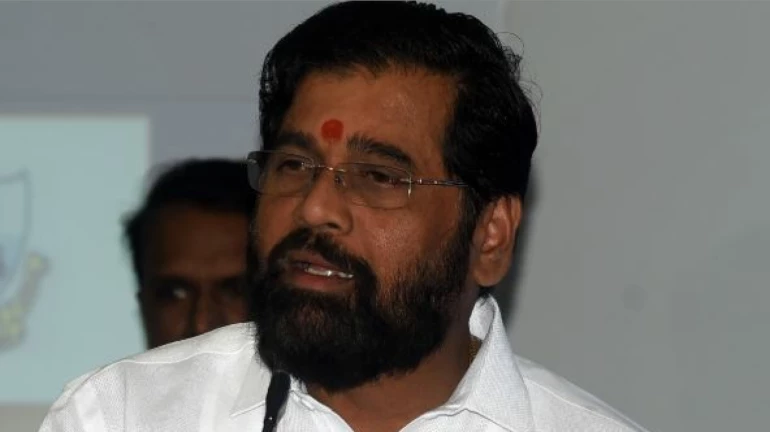
With Maharashtra state reeling under severe impacts of climate change year after year, several state-based environmentalists have not only urged but also plan to write to Maharashtra Chief Minister Eknath Shinde to take key learnings from Tamil Nadu and implement its Climate Resilience model.
CM Shinde also happens to be Maharashtra's Environment and Climate Change Minister.
Known to spear-head many path-breaking initiatives to build climate resilience, the Tamil Nadu government which has set up a Special Purpose Vehicle- the Tamil Nadu Green Climate Company (TNGCC) to carry out the Climate Action Plan effectively, launched the Tamil Nadu Climate Change Mission on Friday. With this, Tamil Nadu has become a pioneer among the Indian States in launching this Climate Change Mission.
The key goals of the Tamil Nadu Climate Change Mission are to formulate plans to reduce overall greenhouse gas emissions in Tamil Nadu, increase public transport use, develop strategies to reduce emissions through green energy and renewable energy, increase forest cover in Tamil Nadu, manage waste effectively, develop ways to mitigate impacts of climate change, access financial resources for adaptation, initiating climate education in educational institutions, priority focus on climate action for women and children, and adopting (One Health) approach that includes human health, animal health, and ecological health to understand health disruptions caused by climate change.
Bhagwan Kesbhat, Founder of Waatavaran Foundation said that the state government of Maharashtra has been actively speaking about building climate resilience and supporting the central government-led efforts on achieving climate targets. “With the year 2023, is the most ideal time for the State to launch a dedicated and similar mission to the one being implemented in Tamil Nadu. It's important that this mission is under the leadership of the Chief Minister as it will ensure accountability and implementation on the ground,” he said, adding that Waatavaran is also planning to send a letter to the Chief Minister’s office soon with this request.
Maharashtra state compensated ₹19,637 Cr to victims of climate change-related incidents over six years across 35 districts, data from the state government has shown. Nanded, Beed, Jalna, Aurangabad, Nashik & Sangli districts are most impacted by extreme weather, floods, cyclones, etc. with over ₹1,000 Cr paid in compensation for each district. Between 2016 and 2021, the state paid ₹8,126.96 crores for damages caused by untimely rains, hailstorms, and stormy winds, ₹ 4,126.04 crore for excessive rains and floods, ₹3,992.7 crores on heavy rains alone, ₹769.85 crores on flood damage mitigation, and ₹ 2,666.47 crores for damages caused by cyclonic storms.
Leena Buddhe, Founder of Nagpur-based Centre For Sustainable Development (CFSD) stated that the entire belt of Vidharbha and Marathwada was highly vulnerable to climate change. “One of the main predictions made in the most recent IPCC report was that heat waves would increase, having a particularly negative impact on the Vidarbha region of Maharashtra. Both urban and rural regions must make this adjustment. There are some areas of Maharashtra that lack water as well. Although there are watershed management programs underway, they need to be stepped up given the impending threat of heat waves,” she said.
According to Buddhe it was hence necessary for Maharashtra to adopt a model of the Climate Mission established in Tamil Nadu, and this can only be done when each district creates its climate adaptation and mitigation strategies and coordinate with one another as well as the entire state.
The top sources of Greenhouse gas emissions in Maharashtra include energy and power (48%) followed by industry (31%), transport (14%), domestic cooking fuel (3%), and agriculture (2%) among others (2%).
A presentation made to the Maharashtra Cabinet by the Environment Department earlier this year showed that if the world warms by 2°C-2.5°C (as per the IPCC) the tropics (areas in central India such as Maharashtra) will be worst impacted, and severe impacts will be felt in coastal tropical areas including the possibility of submergence (Mumbai and Konkan coast), extreme droughts (for areas like Madhya Maharashtra and Vidarbha), and extensive forest fires that will make forests a source of greenhouse gas emissions rather than a carbon sink.
Anjal Prakash, Research Director and Adjunct Associate Professor, Indian School of Business & Lead IPCC Author said that the recent floods in Sangli and other areas has actually exposed the vulnerability of Maharashtra, meanwhile some parts of the state are also drought prone- to an extent that water trains had to be used.
“Climate change is a force multiplier- it actually aggravates the existing situation. We have seen the monsoon patterns have changed and has been impacting the agriculture lot more. Some of the semi-arid, arid and dry regions are also impacted due to the heat wave and rise in temperature. This is something that the Maharashtra state will have to concentrate on. It's important that the climate change council must be strengthened and taking it forward to what Tamil Nadu has done recently and a similar effort should also be taken up by the State,” he said.





